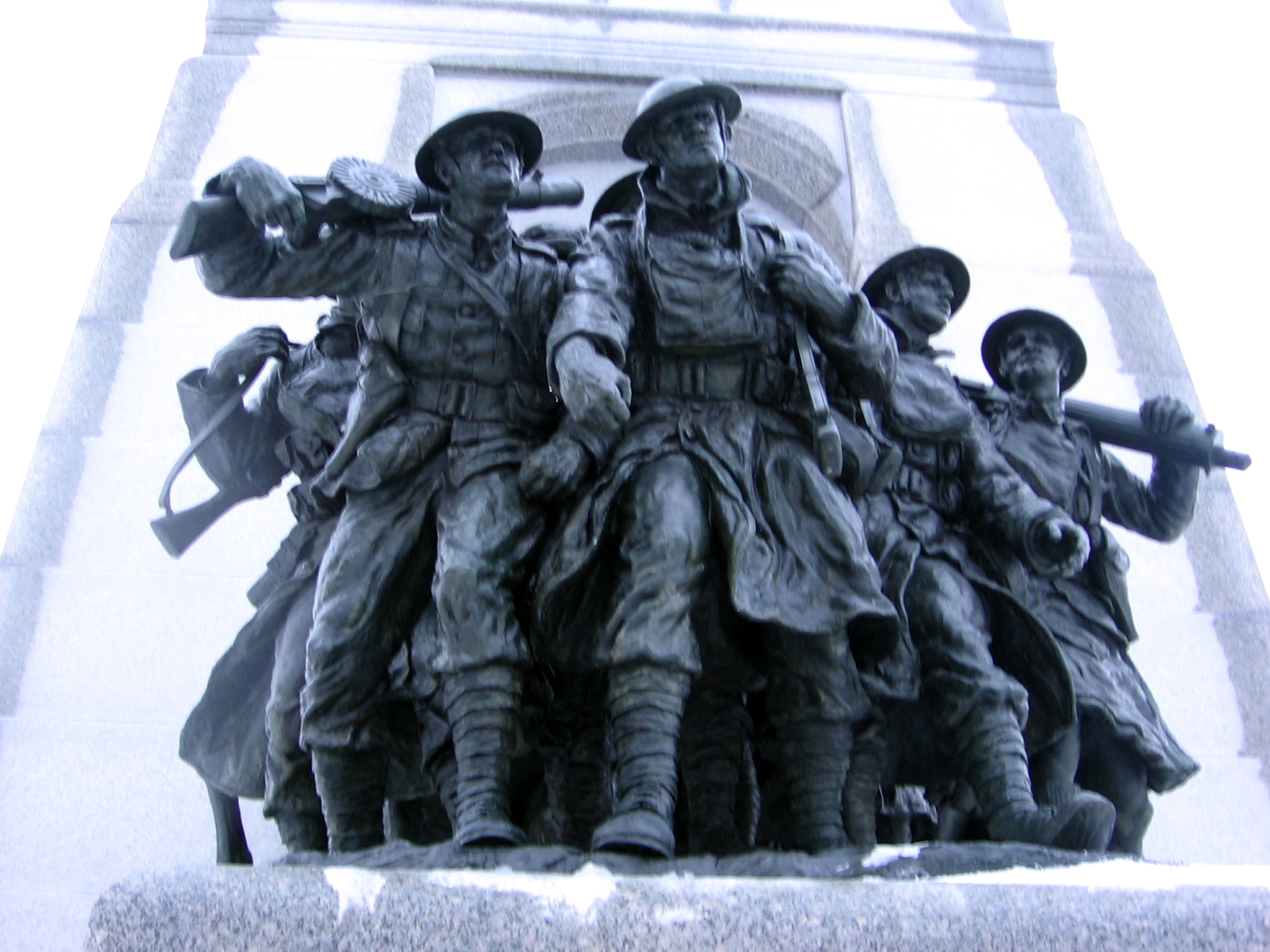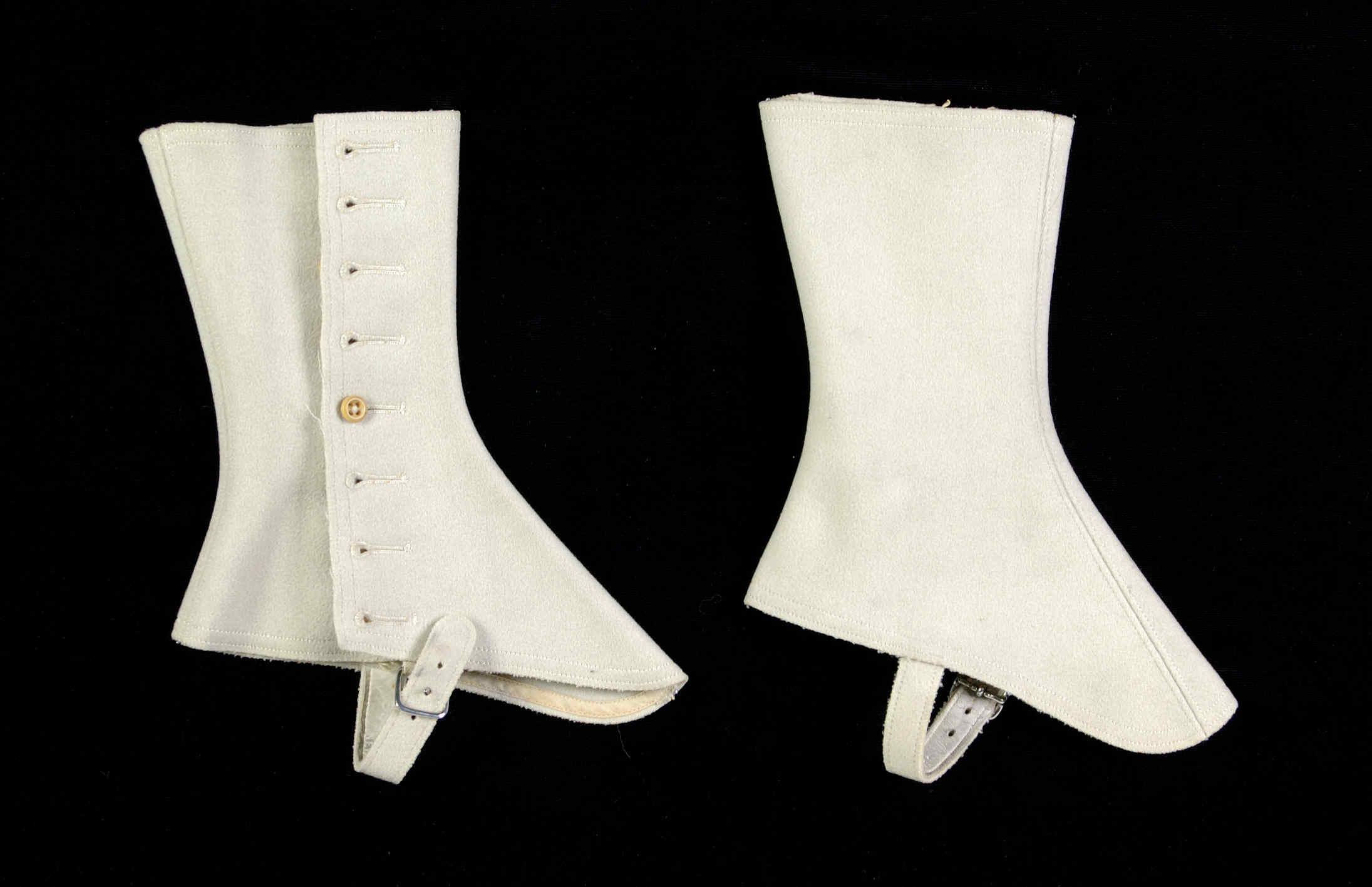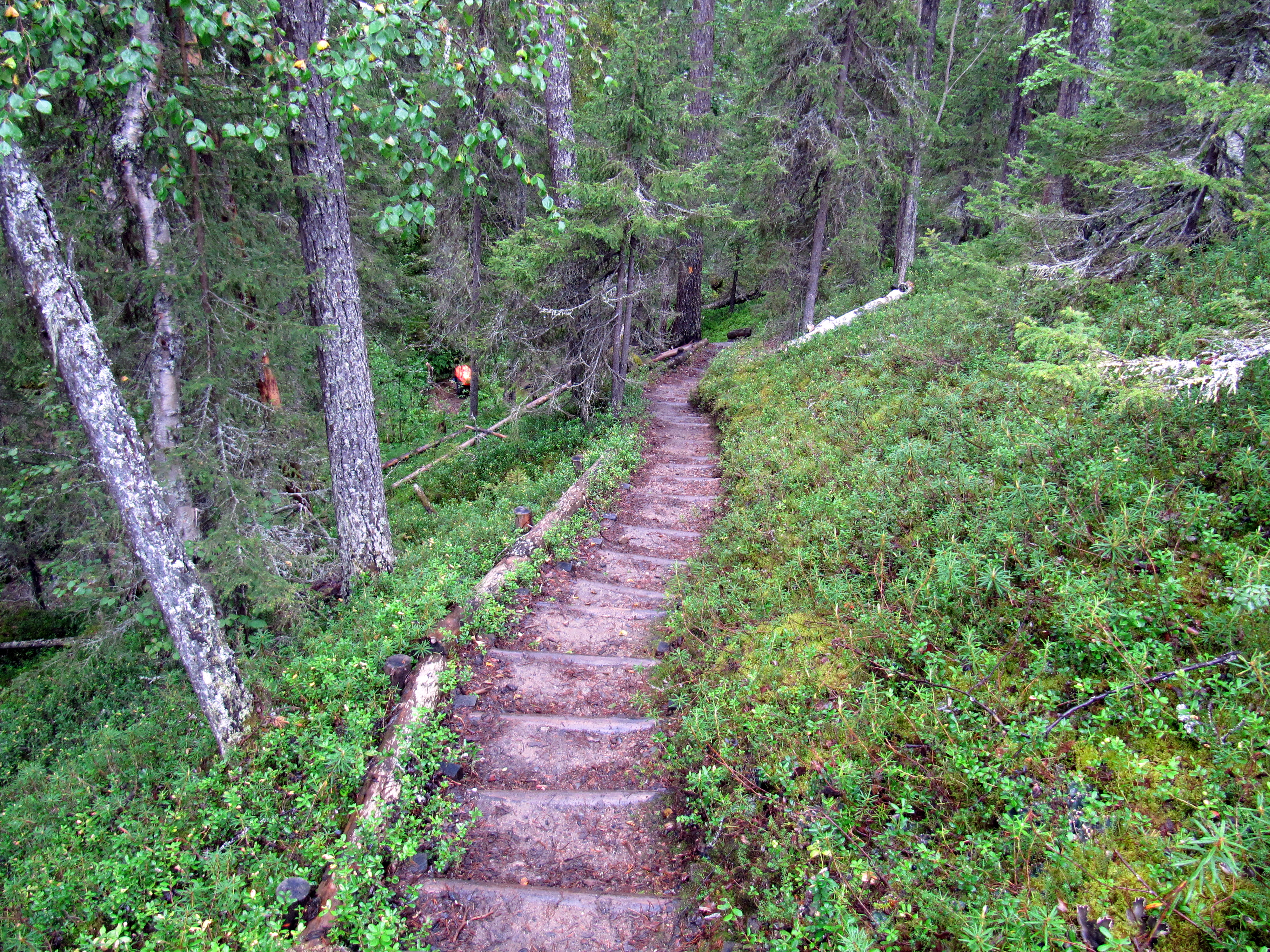|
Gaiter
Gaiters are garments worn over the shoe and bottom of the pant or trouser leg and used primarily as personal protective equipment, in particular against snakebite. They are also commonly used to keep the bottom of the pant-leg dry when hiking in snow. Similar garments used primarily for display are Spat (footwear), spats. Originally, gaiters were made of leather or canvas. Today, those for walking are commonly made of plasticized synthetic cloth such as nylon or polyester. Gaiters for use on horseback continue to be made of leather. They are made to cover the gap between the pants and boots, rising to just below the knee, and usually have drawcords for tightening. Wearing gaiters, while preventing most snake bites, does not provide complete protection. Common materials for leg gaiters on the market are canvas, nylon, Cordura, Kevlar, and leather. Nylon is better at preventing snakebite than polyester, canvas, or Cordura. Military origins and terminology Beginning in 1700, ... [...More Info...] [...Related Items...] OR: [Wikipedia] [Google] [Baidu] |
Chaps
Chaparreras or chaps () are a type of sturdy over-pants (overalls) or leggings of Mexican origin, made of leather, without a seat, made up of two separate legs that are fastened to the waist with straps or belt. They are worn over trousers and were originally intended for protecting the rider from the rain and mud, and from tears and injuries. They were created to replace ''armas de agua'' (water shields) or simply ''armas'' (shields), a set of leather flaps that hung from the Mexican saddle to protect the rider's legs from the rain. The word "chaparreras" is believed to have come from either “chaparrón”, a cloudburst or sudden, heavy rain, or from “chaparros”, a Mexican colloquial name for brush and a type of shrub. Due to the difficult pronunciation, Americans shortened the word to ''Chaps'', originally spelled and pronounced ''schaps'' or ''shaps''. ''Chivarras'', from ''chivo'' (goat), is the name for chaparreras made of goatskins tanned with the hair on. There wer ... [...More Info...] [...Related Items...] OR: [Wikipedia] [Google] [Baidu] |
Puttee
file:Puttees from American Infantry Chauchat.jpg, Close-up of a World War I era United States Army infantryman's puttees A puttee (also spelled ''puttie'', adapted from the Hindi language, Hindi ''wikt:पट्टी, paṭṭī'', meaning "bandage") is a covering for the lower part of the leg from the ankle to the knee, also known as: ''legwraps'', ''leg bindings'', ''winingas'' and ''Wickelbänder'' etc. They consist of a long narrow piece of cloth wound tightly, and spirally round the leg, and serving to provide both support (as a compression garment) and protection. They were worn by both mounted and dismounted soldiers, generally taking the place of the leather or cloth gaiter. History Worn since antiquity, the puttee was adopted as part of the service uniform of foot and mounted soldiers serving in British India during the second half of the nineteenth century. In its original form the puttee comprised long strips of cloth worn as a tribal legging in the Himalayas. The ... [...More Info...] [...Related Items...] OR: [Wikipedia] [Google] [Baidu] |
Spat (footwear)
Spats, a shortening of spatterdashes, or spatter guards are a type of footwear accessory for outdoor wear, covering the instep and the ankle. Spats are distinct from gaiters, which are garments worn over the lower trouser leg as well as the shoe. Civilian dress Spats were worn by men and, less commonly, by women in the late 19th and early 20th centuries. They fell out of frequent use during the 1920s. Made of white cloth, grey or brown felt material, spats buttoned around the ankle. Their intended practical purpose was to protect shoes and socks from mud or rain, but they also served as a feature of stylish dress in accordance with the fashions of the period. Emily Post's 1931 ''Etiquette: The Blue Book of Social Usage'' stated, "Spats are optional. If chosen, they must match the gloves exactly." Increased informality may have been the primary reason for the decline in the wearing of spats. In 1913, friends scrambled to help Griffith Taylor find spats and a top hat to rec ... [...More Info...] [...Related Items...] OR: [Wikipedia] [Google] [Baidu] |
Zouave
The Zouaves () were a class of light infantry regiments of the French Army and other units modelled on it, which served between 1830 and 1962, and served in French North Africa. The zouaves were among the most decorated units of the French Army. It was initially intended that the zouaves would be a regiment of Berber volunteers from the Zwawa group of tribes in Algeria ("Zwawa" being the origin of the French term '' zouave'') who had gained a martial reputation fighting for local rulers under the Regency of Algiers. The regiment was to consist of 1,600 Zwawa Berbers, French non-commissioned officers and French officers. 500 Zwawa were recruited in August and September 1830. However, twelve years later, this idea was dropped. More zouave regiments were raised and the men recruited to serve in them were almost exclusively French or people of French descent born in French Algeria (''pieds-noirs''), a policy which continued until the final dissolution of these regiments after the ... [...More Info...] [...Related Items...] OR: [Wikipedia] [Google] [Baidu] |
Snowshoe
Snowshoes are specialized outdoor gear for walking over snow. Their large footprint spreads the user's weight out and allows them to travel largely on top of rather than through snow. Adjustable bindings attach them to appropriate winter footwear. Traditional snowshoes have a hardwood frame filled in with rawhide (material), rawhide latticework. Modern snowshoes are made of lightweight metal, plastic, and other synthetic materials. In the past, snowshoes were essential equipment for anyone dependent on travel in deep and frequent snowfall, such as Animal trapping, fur trappers. They retain that role in areas where motorized vehicles cannot reach or are inconvenient to use. However, their greatest contemporary use is for recreation. Snowshoeing is easy to learn and in appropriate conditions is a relatively safe and inexpensive recreational activity. However, doing so in icy, steep terrain requires both advanced skill and mountaineering-style pivoting-crampon snowshoes. Devel ... [...More Info...] [...Related Items...] OR: [Wikipedia] [Google] [Baidu] |
Hiking
A hike is a long, vigorous walk, usually on trails or footpaths in the countryside. Walking for pleasure developed in Europe during the eighteenth century. Long hikes as part of a religious pilgrimage have existed for a much longer time. "Hiking" is the preferred term in Canada and the United States; the term "walking" is used in these regions for shorter, particularly urban walks. In the United Kingdom and Ireland, the word "walking" describes all forms of walking, whether it is a walk in the park or backpacking in the Alps. The word hiking is also often used in the UK, along with rambling, hillwalking, and fell walking (a term mostly used for hillwalking in northern England). The term bushwalking is endemic to Australia, having been adopted by the Sydney Bush Walkers Club in 1927. In New Zealand a long, vigorous walk or hike is called tramping. It is a popular activity with numerous hiking organizations worldwide, and studies suggest that all forms of walking have health b ... [...More Info...] [...Related Items...] OR: [Wikipedia] [Google] [Baidu] |
US Navy 030708-N-5862D-127 Members Of The U
US or Us most often refers to: * ''Us'' (pronoun), the objective case of the English first-person plural pronoun ''we'' * US, an abbreviation for the United States US, U.S., Us, us, or u.s. may also refer to: Arts and entertainment Albums * ''Us'' (Brother Ali album) or the title song, 2009 * ''Us'' (Empress Of album), 2018 * ''Us'' (Mull Historical Society album), 2003 * ''Us'' (Peter Gabriel album), 1992 * ''Us'' (EP), by Moon Jong-up, 2021 * ''Us'', by Maceo Parker, 1974 * ''Us'', mini-album by Peakboy, 2019 Songs * "Us" (James Bay song), 2018 * "Us" (Jennifer Lopez song), 2018 * "Us" (Regina Spektor song), 2004 * "Us" (Gracie Abrams song), 2024 * "Us", by Azealia Banks from '' Fantasea'', 2012 * "Us", by Celine Dion from ''Let's Talk About Love'', 1997 * "Us", by Gucci Mane from '' Delusions of Grandeur'', 2019 * "Us", by Spoon from '' Hot Thoughts'', 2017 Other media * US Festival, two 1980s California music festivals organized by Steve Wozniak * ''Us'' (1991 ... [...More Info...] [...Related Items...] OR: [Wikipedia] [Google] [Baidu] |
The Philadelphia Inquirer
''The Philadelphia Inquirer'', often referred to simply as ''The Inquirer'', is a daily newspaper headquartered in Philadelphia, Pennsylvania. Founded on June 1, 1829, ''The Philadelphia Inquirer'' is the third-longest continuously operating daily newspaper in the United States. The newspaper has the largest circulation of any newspaper in both Pennsylvania and the Delaware Valley metropolitan region, which includes Philadelphia and its surrounding communities in southeastern Pennsylvania, South Jersey, northern Delaware, and the northern Eastern Shore of Maryland. As of 2020, the newspaper has the 17th-largest circulation of any newspaper in the United States As of 2020, ''The Inquirer'' has won 20 Pulitzer Prizes. Several decades after its 1829 founding, ''The Inquirer'' began emerging as one of the nation's major newspapers during the American Civil War. Its circulation dropped after the Civil War's conclusion, but it rose again by the end of the 19th century. Originally sup ... [...More Info...] [...Related Items...] OR: [Wikipedia] [Google] [Baidu] |
Hiking Boot
A hike is a long, vigorous walk, usually on trails or footpaths in the countryside. Walking for pleasure developed in Europe during the eighteenth century. Long hikes as part of a religious pilgrimage have existed for a much longer time. "Hiking" is the preferred term in Canada and the United States; the term "walking" is used in these regions for shorter, particularly urban walks. In the United Kingdom and Ireland, the word "walking" describes all forms of walking, whether it is a walk in the park or backpacking in the Alps. The word hiking is also often used in the UK, along with rambling, hillwalking, and fell walking (a term mostly used for hillwalking in northern England). The term bushwalking is endemic to Australia, having been adopted by the Sydney Bush Walkers Club in 1927. In New Zealand a long, vigorous walk or hike is called tramping. It is a popular activity with numerous hiking organizations worldwide, and studies suggest that all forms of walking have healt ... [...More Info...] [...Related Items...] OR: [Wikipedia] [Google] [Baidu] |
Crampon
A crampon is a traction device attached to footwear to improve mobility on snow and ice during ice climbing. Besides ice climbing, crampons are also used for secure travel on snow and ice, such as crossing glaciers, snowfields and icefields, ascending snow slopes, and scaling ice-covered rock. There are three main attachment systems: step-in, hybrid, and strap bindings. The first two require boots with welts, or specialized mountaineering boots with dedicated front and rear lugs, as a cam-action lever attaches the crampon to the heel. The last type (strap bindings) is more versatile and can adapt to virtually any boot or shoe, but often does not fit as precisely as the other two types. Oscar Eckenstein designed the first 10-point crampon in 1908, dramatically reducing the need for step cutting. This design was then made commercially available by the Italian Henry Grivel. Characteristics Materials Crampons are made of steel alloy, lightweight aluminum, or a combination ... [...More Info...] [...Related Items...] OR: [Wikipedia] [Google] [Baidu] |







